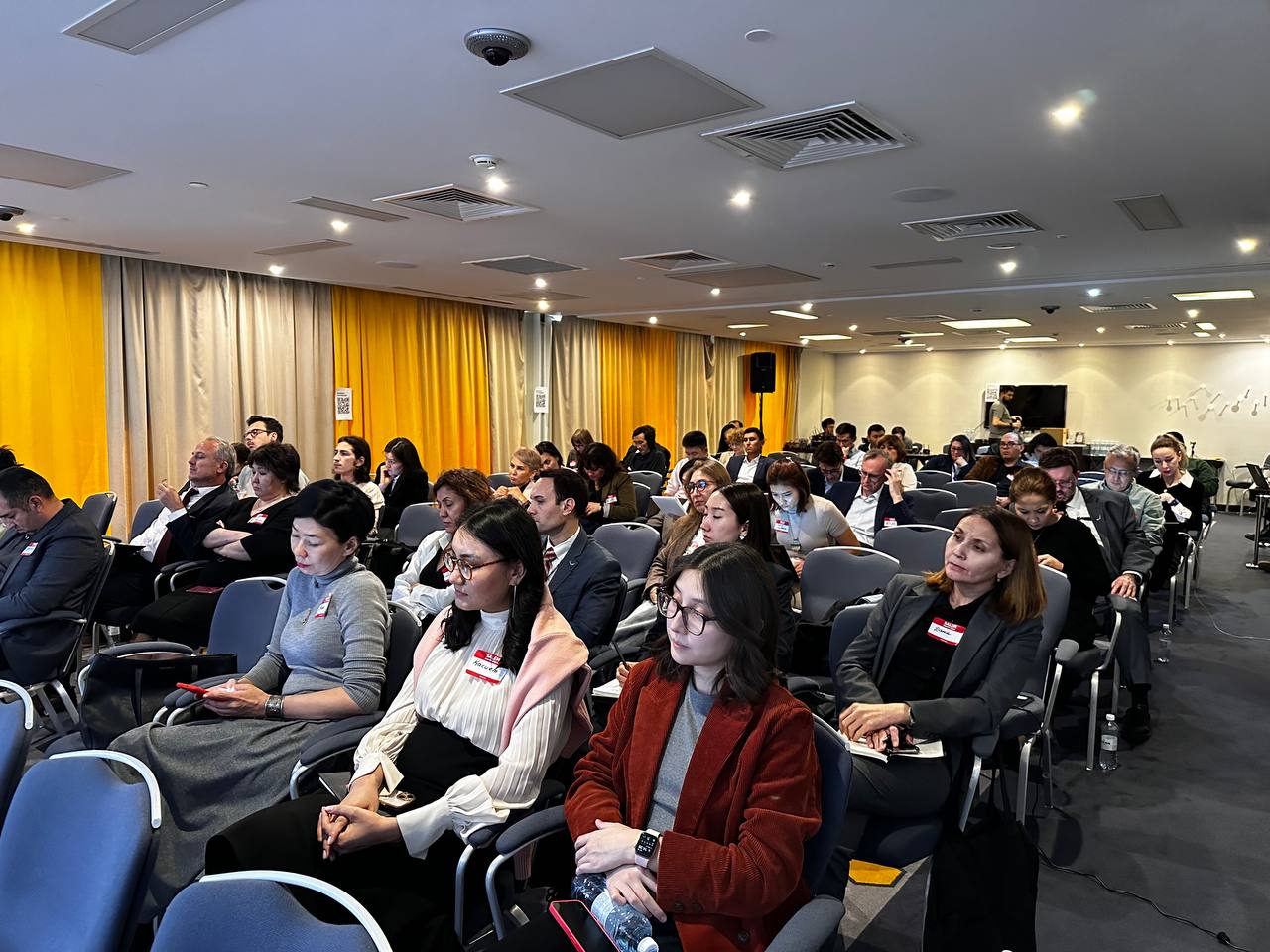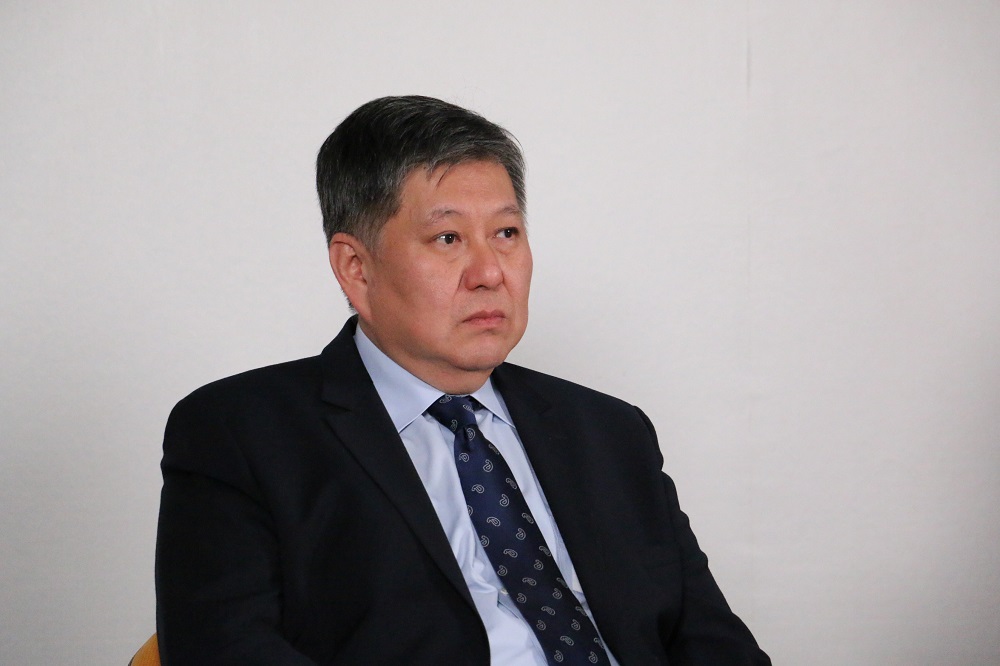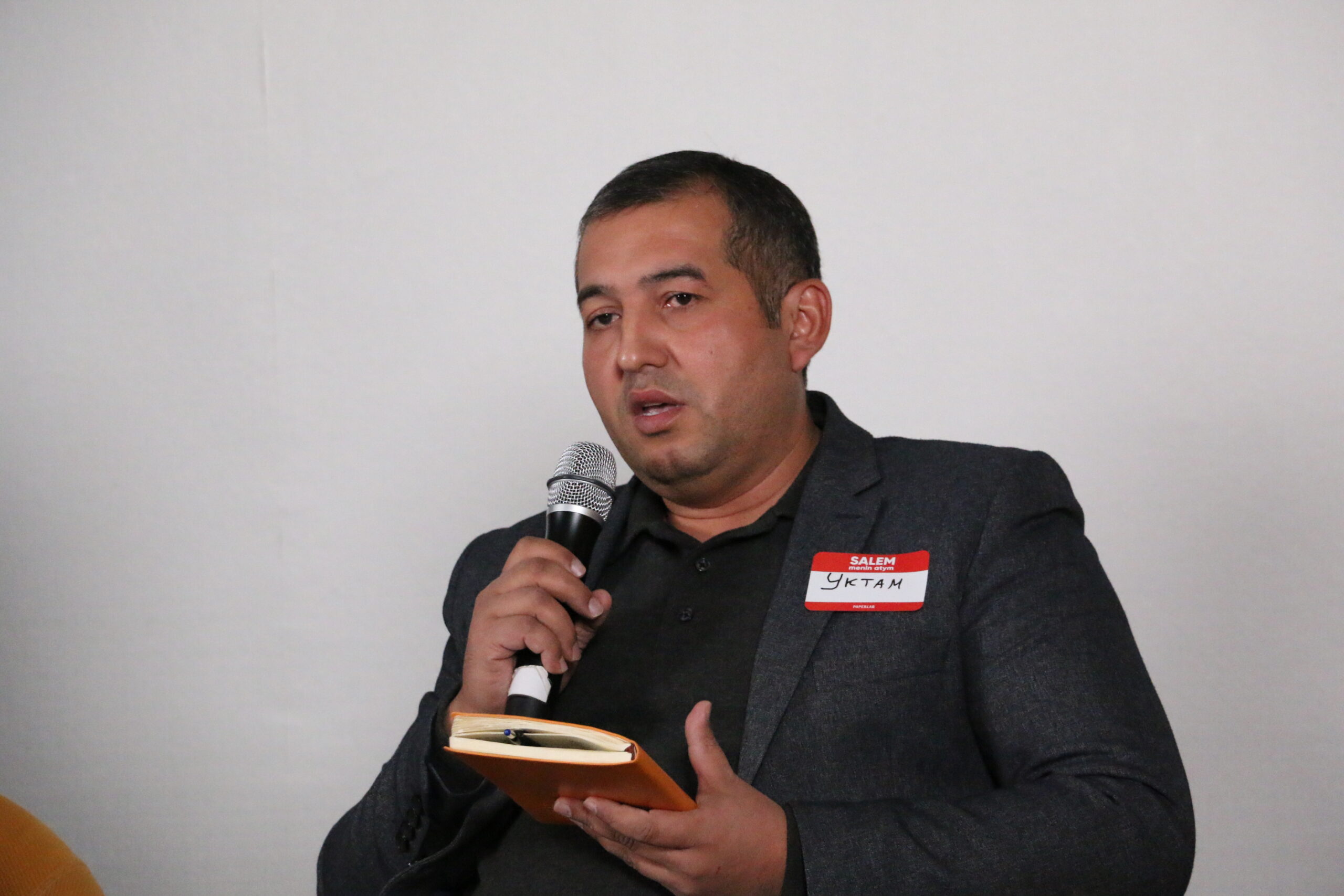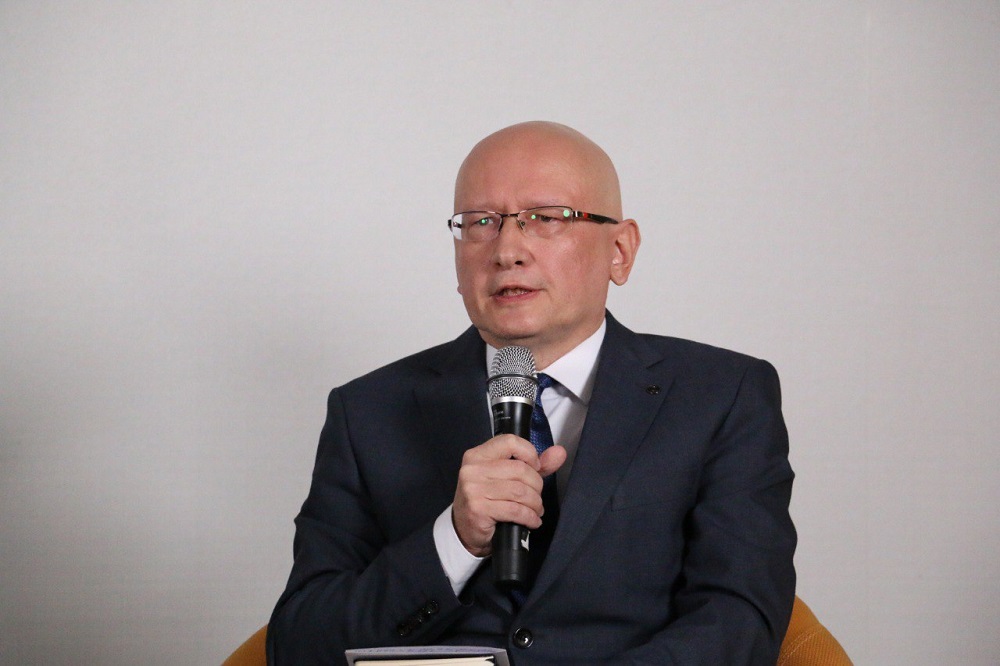Russia’s invasion of Ukraine, which began in 2022, caused negative economic expectations in Central Asia. But national economies in the region managed to survive due to high prices of natural resources, opening opportunities in trade and change in the rouble rate. However, relative welfare is unstable.
Inflation, migrants from Russia, increase in money transfers, changes in commercial routes and risks of secondary sanctions are the consequences of the war in Ukraine common for all Central Asian states. However, republics have specific consequences.
Kazakhstan: Economic War

Aiman Tursynkhan, a Kazakhstan-based economist, director of foresight agency Eximar Foresight, noted during the Central Asian Think Tanks Forum in Astana that the war in Ukraine affected the global food security because both the suffering party (Ukraine) and the aggressor party (Russia) were excluded from the global commodity exchange.

“Today, we see that world’s breadbaskets of cereals, oil crops, meat products have been excluded (from the global commodity exchange – Editor’s note) because of sanctions, namely Russia and Belarus, because of the war – Ukraine, and because of the consequences of the sanctions – Kazakhstan,” said Aiman Tursynkhan.
According to her, the situation has resulted in the tremendous decline in wheat crop yields in Kazakhstan due to the disruption of the seed material supply chain, which was procured before the war from experimental seed fields in Ukraine and Russia.
“Currently, a lot of work is being done to transfer these seed fields to Kazakhstan not to leave the world without grain,” Aiman Tursynkhan said.
The expert has also said about the signs of business expansion from Russia: over 27 thousand companies have moved from Russia to Kazakhstan and they can now enjoy tax and customs preferences. According to her, strategic targets of the republic that make up the basis of ore mining and smelting, transportation, aerospace and oil and gas sectors are “under unrelenting pressure forcing them to transfer the assets to sanctioned holdings and corporations.”
“If the threat of conflicts arises tomorrow, our northern neighbour has already demonstrated the spots it would hit us at. For two years of the war, Russia has turned off and on our main export pipeline (oil – Editor’s note) via the Caspian transmission pipeline. This is how it has affected the serious increase in negative effects on our economy and provoked higher inflation rate at our country than in Russia, which is the aggressor. The inflation rate in Russia has reached 15 per cent, in Ukraine 26 per cent, in Kazakhstan over 24 per cent because the Russian Federation wages the economic war against Kazakhstan despite its military aggression against Ukraine,” said Aiman Tursynkhan.
Kyrgyzstan: Re–export and famine
Due to the war in Ukraine, trade flows, which used to pass through Russia, have changed and complicated logistics for businesses. Kyrgyzstan-based expert Kanat Tilikeev said about it.

“Previously, we delivered seeds, fertilisers, production resources, raw materials via Russia, and now we have to use the ‘middle way’, i.e. when we deliver via Kazakhstan, Caspian Sea, Azerbaijan, Georgia and further via the Black Sea. It is a more expensive and complex method of delivery, and it has affected the cost of agricultural and food resources,” Tilikeev said.
He also specified the indicators of re-export of hi-tech goods, which cause some annoyance among European and American officials.
The arrival of great numbers of Russians, almost 70 per cent increase if compared to 2021, has led to real property and rent price hike. It has had a bad impact on locals who do not have their own houses. The situation of Kyrgyzstanis has worsened even more because of the food price hike. According to Tilikeev, prices increased by 14.7 per cent last year, and food inflation has exceeded 17 per cent. For three years, food prices have increased almost by 50 per cent if compared to 2019.
“It has led to the increase in poverty. In 2019, our poverty rate was 20 per cent, in 2020 it increased up to 25 per cent, in 2021 to 33 per cent, and last year it remained at the same level. If we look at what 40 per cent of poor people eat, we’ll see the deficit of consumption of basic foods, the lowest 20 per cent eat much worse, famine has made a comeback,” said Kanat Tilikeev.
Tajikistan: An attempt to accelerate industrial development and the unemployment
Tajikistan dependent on supplies of goods from Russia has faced some shock due to the changes in the structure of sales turnover. In the first quarter of 2022, trade balance plummeted by 38 per cent, said economist Uktam Dzhumaev.

“In the second quarter of 2022, the crisis got worse and reached 48 per cent. Our government has raised the alarm: if everything continues the way it is now, the budget will decrease. It is known that no foreign currency leads to devaluation of the national currency. It results in negative consequences and rise in consumer prices,” the expert said.
According to Uktam Dzhumaev, bread prices have increased by 25-30 per cent, sugar, meat and eggs prices have gone up by 40-50 per cent, energy resources have increased almost by 200 per cent. The expert said that Tajikistan has relied on the acceleration of industrial development, transition to green energy, and reconstruction of the domestic bank system dependent on intermediary operations of Russian banks.
Just like in Kyrgyzstan, Tajikistan has faced rise in real property prices, while the welfare of locals has reduced significantly – poverty rates have increased this year by 5-7 per cent compared to 2022. High unemployment rate in the country still forces Tajikistanis seek earnings abroad. In 2022, 173 thousand citizens of Tajikistan obtained citizenship of Russia, thus raising the risk of involvement in the war against Ukraine.
Uzbekistan: Better trade, no investors
In the first year after the war commenced, the economy of Uzbekistan adjusted to the changes. Economic growth rates in 2022 were 5.7 per cent. Director of the Center for Economic Development (Uzbekistan) Yuly Yusupov said that commodity export to Russia increased by 53 per cent last year. Export to other CA states is on the second place with growth by 22 per cent.

“The rate of re-export, according to open data, is nearly 10-15 per cent. Mainly brand name clothing from other countries that passed through Uzbekistan, domestic appliances, and other kinds of equipment are re-exported today. Based on such large discrepancies in statistics, I suspect that re-export rates were higher,” Yuly Yusupov said.
Money transfers have helped the economy of Uzbekistan to stand out. According to the expert, labour migration from Uzbekistan to Russia has not decreased, but even increased. Because of the strengthened rouble last year, rouble salaries increased due to the higher demand for work force, receipts from labour migrants increased. The money of Russian migrants who fled from mobilisation has had a serious impact on money transfers to Uzbekistan.
“In four quarters after the beginning of the full-scale war, money transfers have almost doubled. In this period, they amounted to 18.6 billion dollars, which is nearly 23 per cent of the GDP of Uzbekistan. This is rather a good driver of economic growth,” Yusupov said.
Another driver was the increase in consumer needs by 1.4 per cent. Yuly Yusupov relates it to the inflow of Russians. According to the expert, there has been the increase in loans and foreign direct investments by Russia, Türkiye and China.
However, Uzbekistan has faced increased inflation due to the rise in global prices of food, energy resources, transportation services, as well as the rise in prices of rent, real property, catering services due to the arrival of relocated Russians.
“Also, the Uzbek sum has strengthened in real terms because devaluation of the sum was 3.8 per cent vs. 12 per cent inflation. It means that the Uzbek sum has strengthened in real terms due to money transfers. It has a negative impact on the competitive capacity of local economy,” Yuly Yusupov said.
In the second year of the war, beginning in March-April, the expert has emphasised a more negative impact on the economy because of the rouble crash, decrease in money receipts from labour migrants in dollar terms, and reduction of demand for Uzbek goods in Russia.
“If we compare five months of this year and nine months of last year, export to Russia has decreased nearly by 24 per cent. Money transfers, if we compare figures in the first quarter this year and the same period of last year, have decreased by 35 per cent. One of the results is the devaluation of the Uzbek sum by 8 per cent,” Yusupov said.
Expectations that investors leaving Russia would come to Uzbekistan were not met. There are rare cases only. Yuly Yusupov relates it to the fact that investors see risks because of the possibility of secondary sanctions, unfavourable business climate.
What did the survey show?
According to the expert survey held by PaperLab, the problem of inflation in Central Asian states is still very relevant, but there are some positive forecasts promising improvement of the situation. Moreover, new opportunities have emerged in trade that were provided for by previous international treaties. But some countries use insecure ways to trade that can result in secondary sanctions. Anyway, it could bring additional money to the economy of the countries in the region. High prices of natural resources, as well as relocation of Russian companies, favourable rouble rate and money transfers helped to avoid serious deterioration in the economy during the war. However, according to researchers, these factors cannot be controlled by economic processes taking place in the region, or by their governments. Therefore, they are unstable.
“If we see some decline at the end of this year or at the beginning of the next year, which is obvious by prices of resources, economies will collapse and negative consequences will follow. It will be accompanied by other risks – water shortage in Central Asia, climate change, local conflicts in the region. There are also risks that it could lead to backtracking of market reforms,” said Aldiyar Auezbek, researcher of PaperLab, during the presentation of interim outcomes of the research “The war and the future of Central Asia in expert reviews.”
Survey participants also pay attention to dependence of regional countries on economic and political processes in China, which escalates the situation in neighbouring countries – from Afghanistan to the region including Israel.
“Therefore, there are many various factors, unstable factors that affect the economy. In terms of economy, integration is important to us, just like diversification. But in addition to traditional economic and export diversification, we need diversification of trade routes, trade partners, diplomatic partners. Only in this case we can declare with conviction that states of Central Asia would develop economically,” Aldiyar Auezbek said.

